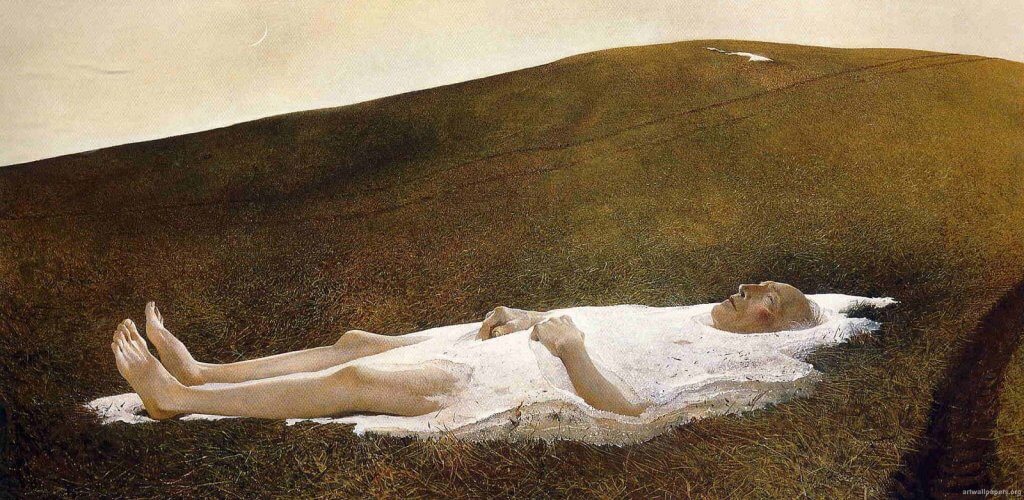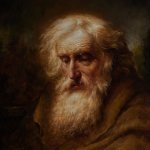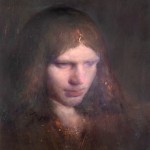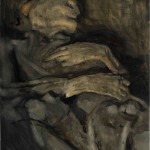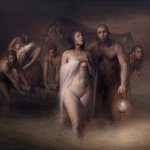News and Articles › Paintings and drawings
The needs of poetry make what is plausible though impossible preferable to what is possible but implausible.
— Aristotle, philosopher
Top list
View the entire list
After striving to absorb it for decades in printed form, this retrospective is the most immersive experience I’ve had with Andrew Wyeth’s (1917 – 2009) work.
And, what an experience it is. A “once in a lifetime” assembly of work? Featuring paintings and drawings that have spawned innumerable postcards, prints, and book covers… they all seem to be here, to the point where I found that capturing images myself was pointless, as I already have a better reproduction of the painting in a book back home. However, that’s not to say there is nothing “new” to see, as this exhibition also features several works from all eras of Wyeth’s career that I’d never seen before. The setting for this exhibition, a renovated barn converted into a museum dedicated to the work of Andrew Wyeth and others in his talented family, could hardly be more appropriate, as the settings for much of Wyeth’s work are the same tree lined rolling hills of Pennsylvania that I’ve inhabited all my life.
The dates on the placards evoke an irrepressible chuckle – the 1940’s, 50’s, 60’s… eras of art history devoted to isms and pop art – how Wyeth must’ve enraged critics! We know he did. But now, here, the totality of Wyeth’s life’s work has rendered their attacks moot.
Wyeth painted slivers of grass… pebbles… fishing nets… and individuals with such care that you sense he wished to imbue a sort of permanence in everything.
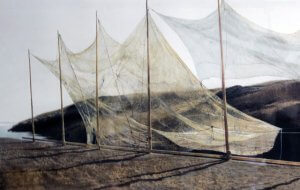
Andrew Wyeth, “Pentecost”
However innocuous his subject, one never gets too comfortable in a Wyeth painting. An aura of death and melancholy hangs over most of his work, whether he’s painting cows, dogs, rocks and hills, or children. I often recall another painter I heard speak, citing Wyeth’s influence, of how he had pursued Wyeth’s aesthetic by venturing out to paint barns, livestock, and farmers, to no avail.
Wyeth’s work is not the result of a painter simply placing himself at an opportune location.
It is the result of hard work, study, and exploration, evident here in the way of dry brush sketches, watercolors, and graphite drawings. I was surprised at just how loose some of the drawings were, Wyeth likening the pursuit of his subject to a kind of combat (“fencing”). This retrospective is beautifully and thoughtfully hung, with the studies accompanying the resulting “finished” works side by side.
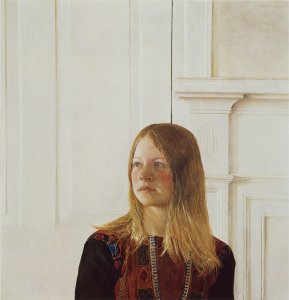
Andrew Wyeth, “Siri”
You get a sense of how deeply personal Wyeth’s relationships with his subjects were, as they seem to be breathing in his paintings. Indeed, the patience with which he layered egg tempera paint feels like a metaphor for the patience required to maintain relationships with those we’re close to. Wyeth’s success with an unforgiving medium like watercolor is further testament to his skill and thoughtful approach to his subject matter.
It seems pointless, almost comical, to cite “highlights” of this exhibition. There were, however, pictures that, free from the confines of a bound page, simply commanded the wall in ways that delighted me. “Night Sleeper”, featured on the cover of “Autobiography”, is a much larger and impactful painting than I imagined it would be – again, Wyeth crafted this sleeping dog with all of the intricate detail he imbued his most intimate subjects with. A man haunted by hallucinations of war finds eternal peace in “Spring”, and Siri reminded Wyeth of youth and hope in the midst of death and mourning. His final painting, “Goodbye”, brings the retrospective to a poignant close, with Wyeth sailing to rest and freedom in his own boat that challenges the edge of the composition.
I left the retrospective buoyed by the world that Wyeth walked me through. Soon, I was passing strip malls and navigating highway exits; Pennsylvania as it is now. Before doing so, however, I passed a tree that had fallen, split and frayed near the root, but still clinging to the ground defiantly.
I couldn’t help but smile, and imagine Andy setting up near it.
The “Andrew Wyeth: In Retrospect” exhibition runs from June 24, 2017 through September 17, 2017 at the Brandywine River Museum in Chadds Ford, Pennsylvania. For more information, please visit http://www.brandywine.org/museum
Published on Thursday, June 29th, 2017
